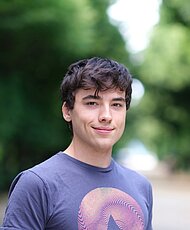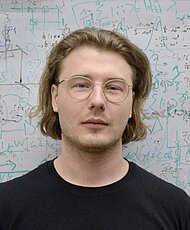The underlying mechanism pertaining to the perception of our surrounding world is central to the understanding of reality. After millions of years of evolution, we are empowered by nature with sensors that enable us obtaining information through physical interactions and biological processes. During the last century, scientists have scrutinized such processes at different levels of complexity and size. However, such observations become more challenging the further we go down in the hierarchy of living organisms to the regime where achieving enough precision and stability is tricky due to the low signal to noise ratio.
There are strong evidences that here, where we are dealing with units of energy and matter such as photons and molecules, quantum science and its applications can have a significant contribution. For example, quantum coherence has been suggested to explain the high efficiency of photosynthesis [1] or quantum-imaging methods can potentially be exploited as a means of future imaging and microscopy [2].

We are aiming to develop tools, which can assist us approaching the answer to our curiosity and fundamental questions in physics and biology. An example of such a successful attempt is the book by Erwin Schrödinger, the Austrian quantum physicist, titled "what is life?”. The ideas that he proposed about the possible physical properties of the genetic code career inspired Watson and Crick for the discovery of DNA structure, one of the most notable breakthroughs of the 20th century.
In addition to precise characterization of biological processes of a given sensory system, once we can harness such sensitivity and reliability, that can still outperform today’s technology in many aspects, we would be able to utilize the nature optimization in two ways:
i) integrating it into the experiment
ii) enhancing a parameter (such as light detection sensitivity) by imitating the nature (biomimetics).
In particular, we are currently interested in studying light sensitive systems at their sensitivity limit by developing quantum optical sources. It would be also philosophically and conceptually intriguing to have live systems directly interact with the experiment at quantum level. There are relatively recent experiments that suggest the presence of single photon response at both single photoreceptor and perception levels (in frog and human being, respectively) [3, 4] which are promising signs that the field is booming.
[1] E. J. O’Reilly, A. Olaya-Castro, “Non-classicality of the molecular vibrations assisting exciton energy transfer at room temperature”, Nature Communications 5, 3012 (2014).
[2] G. B. Lemos, V. Borish, G. D. Cole, S. Ramelow, R. Lapkiewicz, A. Zeilinger, "Quantum Imaging with Undetected Photons", Nature, vol. 512, 409–412 (2014).
[3] N. M. Phan, M. F. Cheng, D. A. Bessarab, and L. A. Krivitsky, “Interaction of Fixed Number of Photons with Retinal Rod Cells”,Phys. Rev. Lett. 112, 213601 (2014).
[4] J. N. Tinsley, M. I. Molodtsov, R. Prevedel, D. Wartmann, J. Espigulé-Pons, M. Lauwers, and A.Vaziri, “Direct Detection of a Single Photon by Humans” Nature Communications 7, 12172 (2016).
Zeilinger Group

Anton Zeilinger
Group Leader+43 (1) 51581 - 9512

Amin Babazadeh
Post Doc (Univie)

Matthias Estermann
Master Student

Xinhe Jiang
Post Doc

Michael Keller
PhD Student

Robert Kindler
PhD Student

Alois Mair
Senior Post Doc

Dorian Schiffer
Master Student